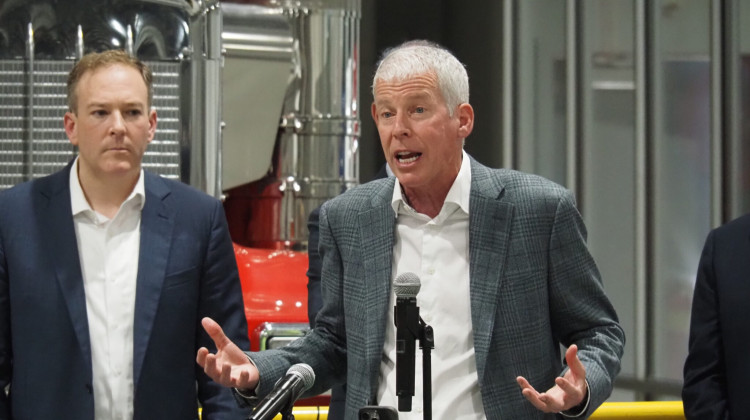While state and federal agencies are trying to stop Asian carp from entering the Great Lakes, there’s evidence that one type is already reproducing in Lake Erie. If they become established, there’s concern that the invasive fish could spread to other lakes — including Lake Michigan.
Because they eat several types of aquatic plants, grass carp are sometimes used to get rid of vegetation in man-made ponds, like on golf courses. But that ferocious appetite can be deadly in natural lakes and rivers that rely on those plants.
John Dettmers with the Great Lakes Fishery Commission says finding reproducing grass carp in Lake Erie is a serious problem.
“We probably have a fairly limited window in which to take action to keep these fish from fully establishing a population,” he says.
Dettmers says if other invasive species are any indication, what affects Lake Erie could plague the other Great Lakes. He says sterile grass carp have already been reported in all of the Great Lakes except Lake Superior.
READ MORE: New Asian Carp Nearing Indiana, If It's Not Already Here
Indiana and many other Great Lakes states only allow the sale of sterilized grass carp, but fertile carp can still be sold in Iowa, Missouri, Arkansas, Mississsippi, Alabama, Nebraska, and parts of Colorado. Dettmers says the Great Lakes Fishery Commission has encouraged those states to ban the sale of fertile carp.
Brian Schoenung is the chief of fisheries for the Indiana Department of Natural Resources. He says unfortunately fertile grass carp are already in some of Indiana’s major river systems — like the Wabash and the White River.
“What we’re trying to prevent is having those reproductive populations find their way into a place where they could do some harm,” he says.
Schoenung says the DNR has been working to keep those carp from reaching the Great Lakes by setting up flood barriers, studying the fish, and commercially harvesting the carp.
Dettmers says regional fishery managers are also developing strategies for getting rid of grass carp in Lake Erie — including the possibility of placing a barrier in the Sandusky River in Ohio which feeds into Lake Erie. He says this might prevent the fish from spawning in that area.
Indiana environmental reporting is supported by the Environmental Resilience Institute, an Indiana University Grand Challenge project developing Indiana-specific projections and informed responses to problems of environmental change.
 DONATE
DONATE









 Support WFYI. We can't do it without you.
Support WFYI. We can't do it without you.